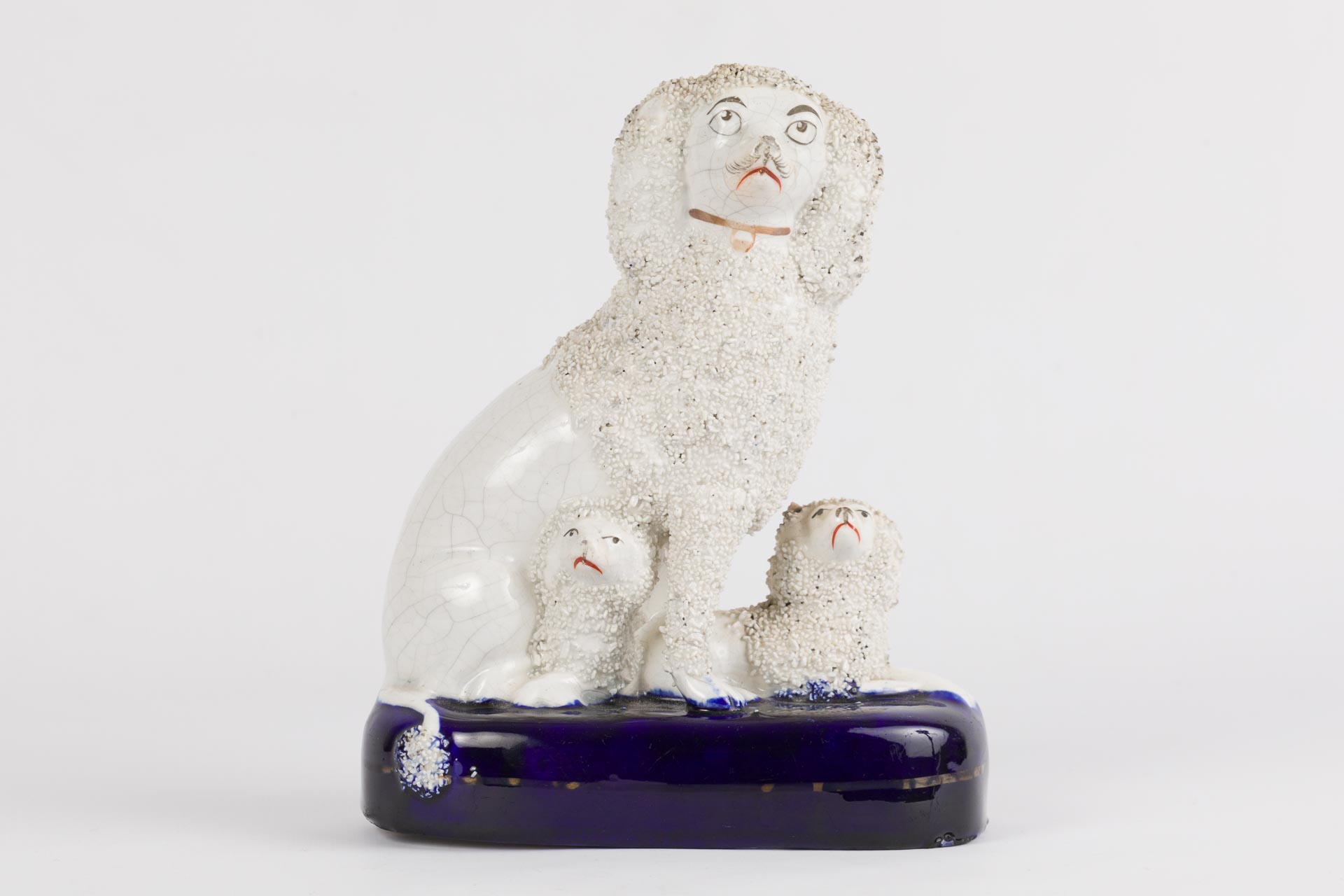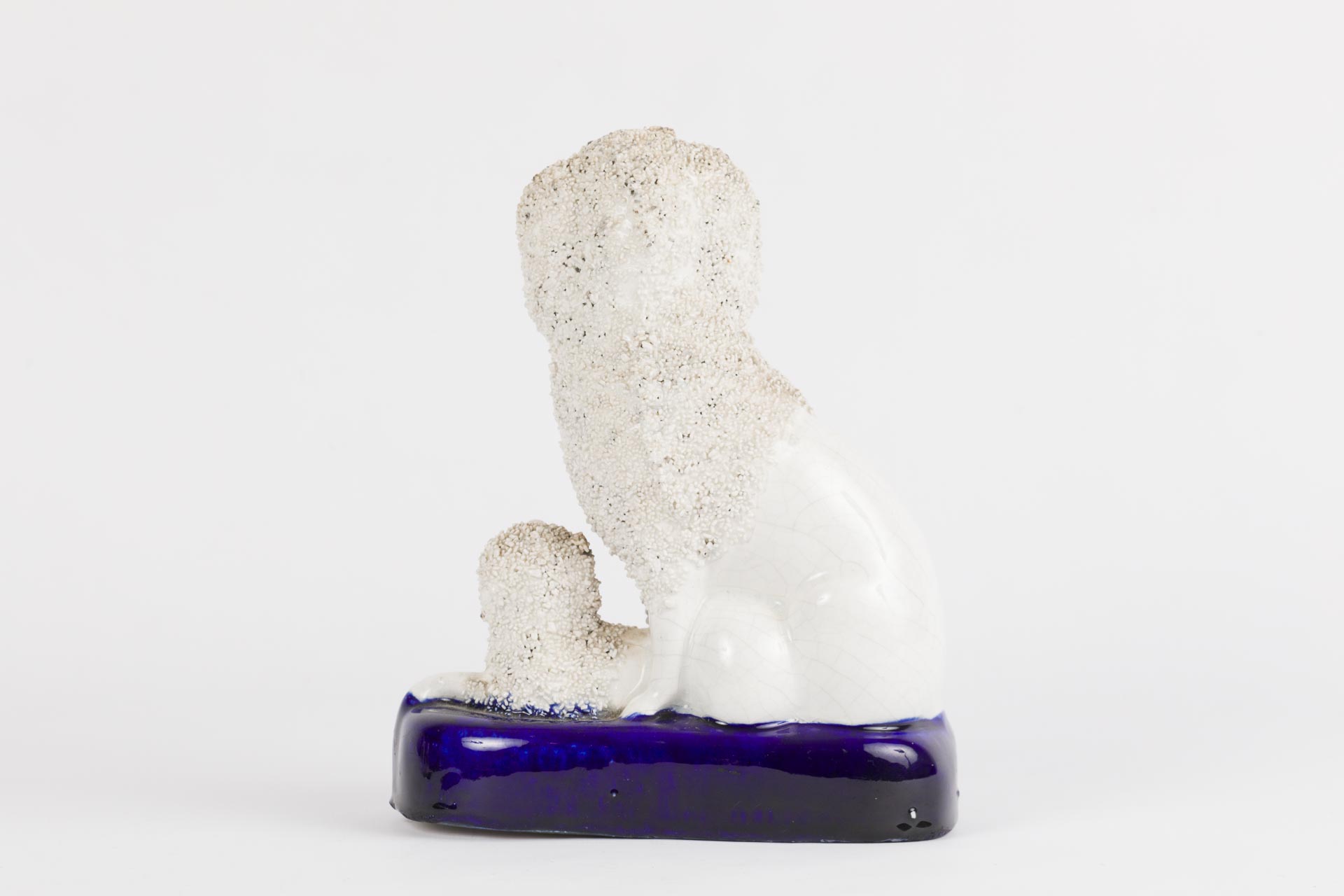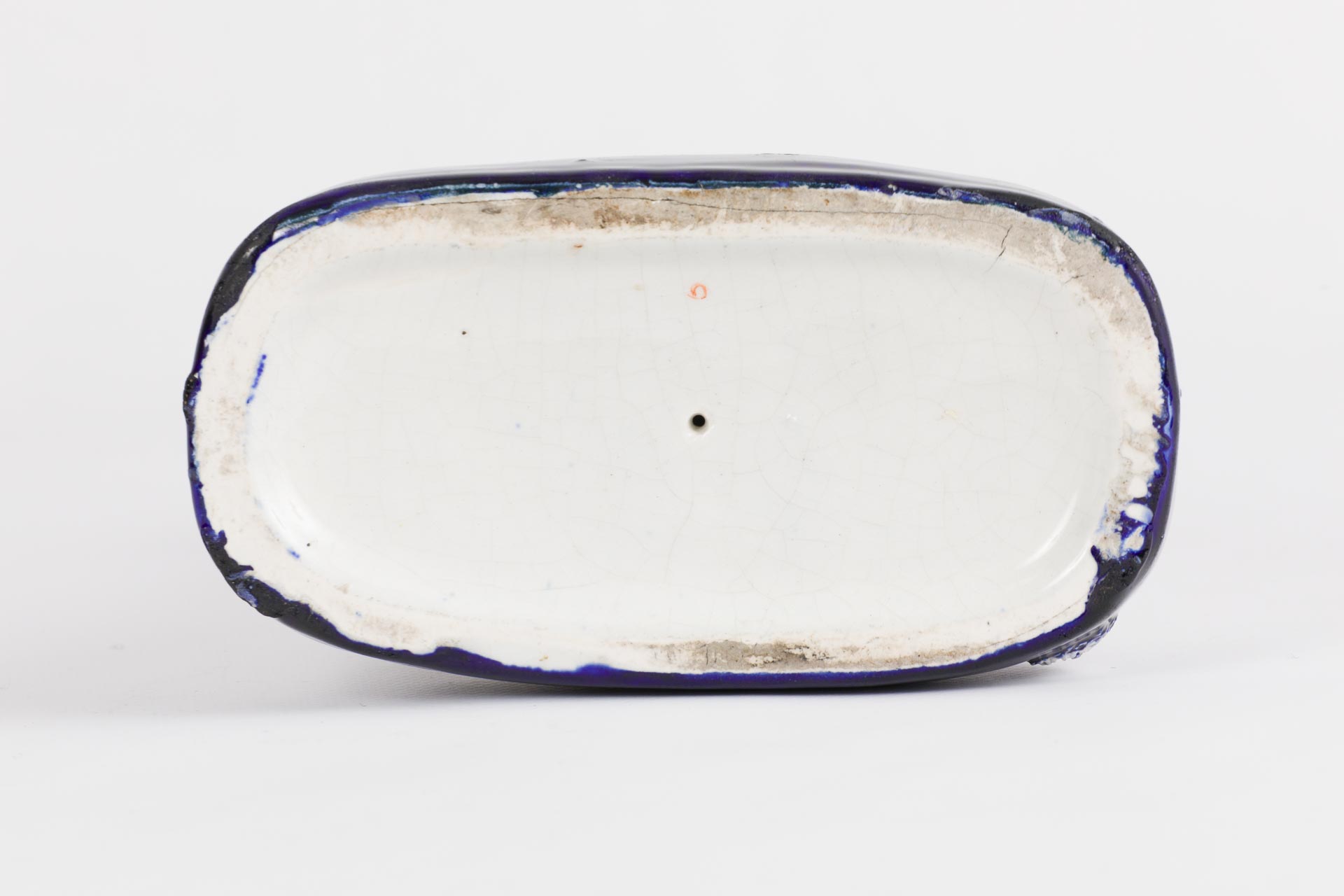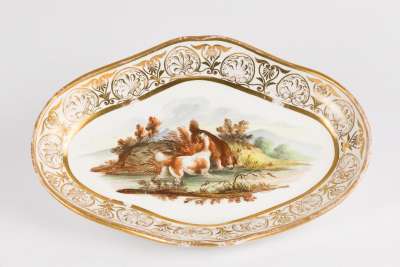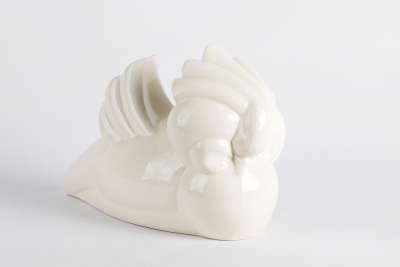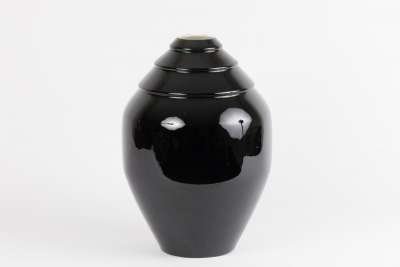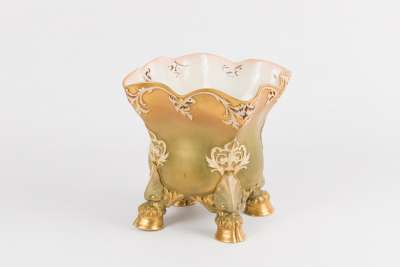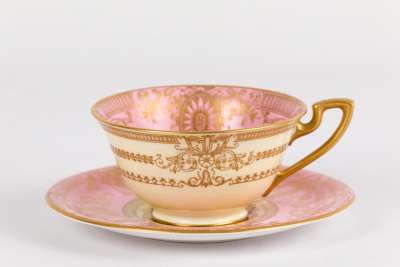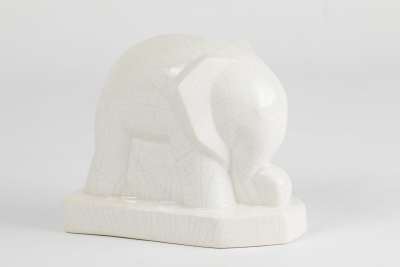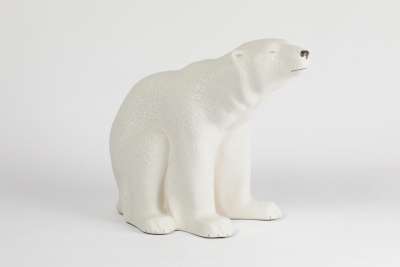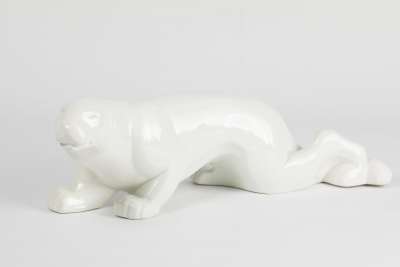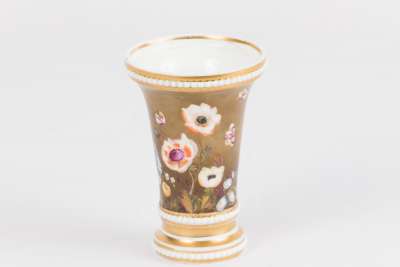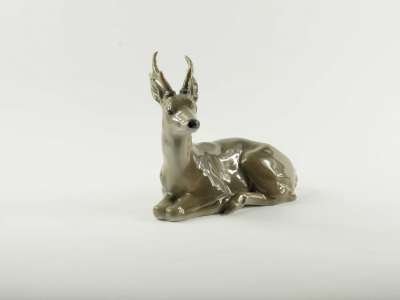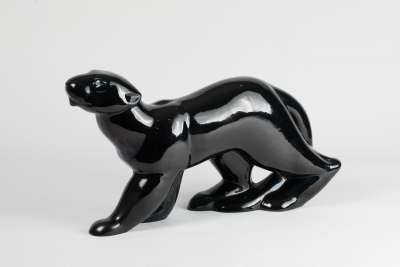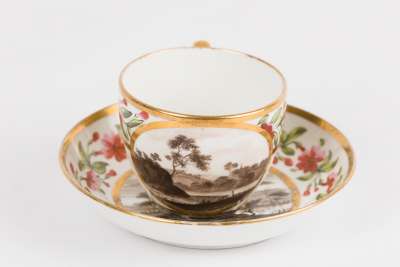The Staffordshire Poodle Figure is an elegant representation of 19th-century English ceramic art. This charming piece features a seated poodle with her pups, showcasing the detailed sculpting and painting characteristic of Staffordshire pottery. Originating from England, it is dated circa 1860 or earlier, identifiable by the use of cobalt blue, which was discontinued after a tax imposition in 1860. The figure is a testament to the skilled craftsmanship of the era, capturing the playful yet dignified nature of the poodle.
Condition Report
Wear consistent with age and use is evident on this Staffordshire Poodle Figure. The piece exhibits some surface wear, which is typical for ceramics of this age. The paintwork remains largely intact, with minor fading in certain areas, specifically where the cobalt blue detailing is present. The glaze retains a good degree of its original sheen, although there are some expected minor scratches and marks from handling over the decades. There are no significant chips or cracks, making it a well-preserved example of its kind. Overall, the figure remains in good condition, reflecting its historical journey.
Dimensions
Weight: 720gm, Length: 16.5cm, Width: 8.5cm, Height: 20.5cm.
A Decorative Mantelpiece Ornament
This Staffordshire Poodle Figure was originally intended as a decorative piece, likely designed to adorn a mantelpiece or a similar prominent place within a Victorian home. These figures were popular amongst the middle class, serving as symbols of status and taste in ceramic art. The depiction of animals, particularly dogs, was a common theme, reflecting contemporary interests and affection for domestic pets. This piece would have added charm and sophistication to a room, offering a glimpse into the lifestyle and aesthetic preferences of the era.
Victorian Ceramic Style
The Staffordshire Poodle Figure is a quintessential example of Victorian ceramic style. This period saw a proliferation of ornamental figures, often depicting animals, historical events, and famous personalities. The use of bright and vivid colours, like the cobalt blue seen in this piece, was a hallmark of the time, offering a vibrant finish that appealed to the tastes of the era. The intricate detailing on the poodle and its pups is indicative of the desire for realism and artistry, typical of Staffordshire pottery, which sought to combine practical craftsmanship with ornamental value.
The Craft of Staffordshire Pottery
The making of this Staffordshire Poodle Figure involved traditional ceramic techniques of the 19th century. The process would have begun with the moulding of the clay into the desired shape, followed by a meticulous hand-painting stage to apply colours like the cobalt blue. After painting, the piece would be glazed and fired to achieve its final finish. The craftsmanship involved in creating such figures required considerable skill, particularly in achieving the detailed textures and expressions seen in the animals. This figure exemplifies the technical prowess and artistic dedication of Staffordshire potters.
Produced by Staffordshire Artisans
Staffordshire, England, was a major centre for pottery production in the 19th century, renowned for its high-quality ceramics. This poodle figure is a product of the region's skilled artisans, who were known for their ability to create detailed, life-like representations in clay. While the specific maker of this piece is not identified, it embodies the collective expertise and artistic tradition of Staffordshire potters. Such figures were typically produced in small workshops, where artisans would specialise in creating these ornamental pieces for both local and international markets.
Collected by Enthusiasts of Victorian Ceramics
Staffordshire figures, such as this poodle with pups, are highly sought after by collectors of Victorian ceramics. Their appeal lies not only in their decorative charm but also in the historical context they provide. These figures offer insights into the cultural and technological advancements of the Victorian era, as well as the social norms and artistic tastes of the time. Collectors appreciate the combination of artistry and historical significance, making such pieces cherished additions to any collection of antique ceramics. Their enduring popularity underscores their value as cultural artefacts.
